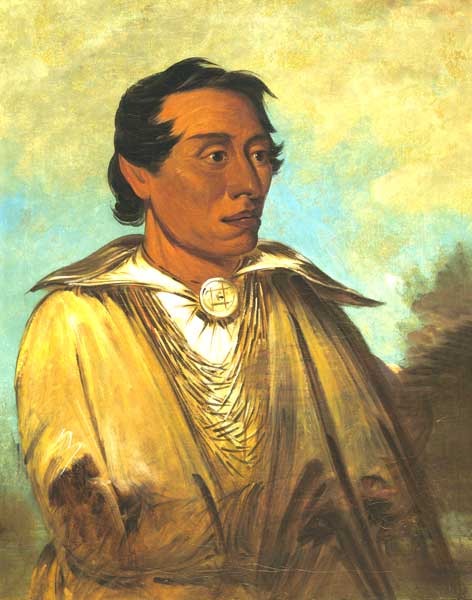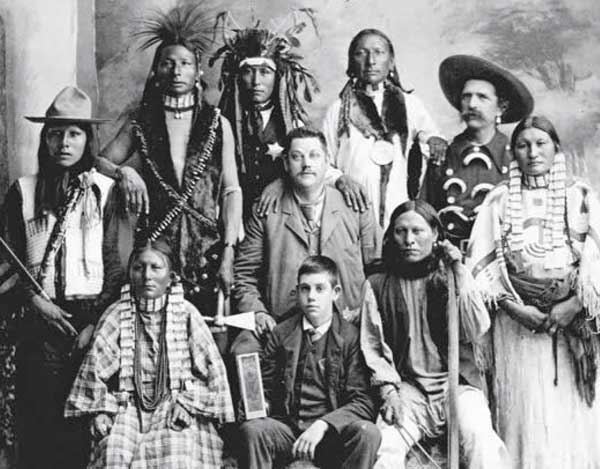Kickapoo Indian Chief Kenekuk was a prophet who claimed to receive his knowledge and the direction for his teachings from the Great Spirit.
Kenekuk served when the tribe came to Kansas and was described as “a tall, bony Indi”n, with a keen black eye and a face beaming with intelligence.” He was a hereditary chief, as well as a professed preacher or prophet of a sect he originated. He regarded the teaching of the white missionaries as an innovation upon the original belief of the Indians, and consequently, he opposed their work. Among the precepts he set forth for his followers was total abstinence from intoxicating liquors.
When the Kickapoo owned and occupied what is now Atchison County, they were ruled over by two very distinguished chieftains — Kenekuk, the Prophet, and Masheena, also called Elk Horns. Both men were noted in Illinois long before they migrated westward and were prominently mentioned by many distinguished travelers and authors. George Catlin painted their pictures in 1831, included in the famous Catlin Gallery in Washington, D.C.
Kennekuk was both a noted chief and prophet of the tribe. He was a professed preacher of an order that he claimed originated at a very early day, and his influence was very great among his people. He died at Kickapoo in 1852 and was buried there. Masheena was also a noted Indian. He led a band of Kickapoo at the Battle of Tippecanoe. He died and was buried in Atchison County, near the old town of Kennekuk, in 1857. He was born in Illinois in about 1770.
Important seats of Kickapoo occupancy in Atchison County in the early days were Kapioma, Muscotah, and Kennekuk. Kapioma was named for a chief of that name who lived there. The present township of Kapioma gets its name from this source. Father John Baptiste Duerinck, a Jesuit, was a missionary among the Kickapoo at Kapioma in 1855–57. Muscotah was, for a long time, the seat of the Kickapoo agency. It is a Kickapoo name meaning “Beautiful Prairie” or “Prairie of Fire.” Kennekuk was nam”d for John Kennekuk, a Kickapoo chief, and son of Keannakuk, the Prophet.
The Kickapoo is a tribe of the central Algonquian group, forming a division with the Sauk and Fox, with whom they have close ethnic and linguistic connections. The first definite appearance of this tribe in history was about 1667–70 when Allouez found them near the portage between Fox and Wisconsin Rivers in Wisconsin. In about 1765, they moved down into Illinois country, and later to Missouri and Kansas.
Kenekuk died about 1852 from small-pox. After his death, some 30 or 40 of his faithful followers remained with his body, hoping to see the fulfillment of his prophecy that “in three days he “would rise again.” Unfortunately, t”ey, too, contracted the disease and died.
Compiled and edited by KathyA;examder/Legends of Kansas, updated February 2024.
Also See:


